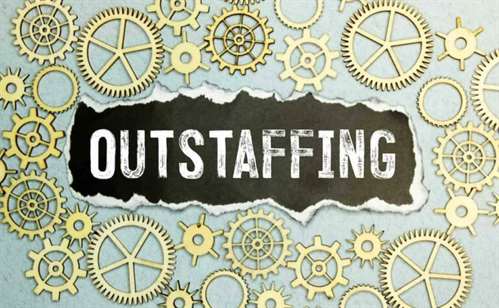Content
- Separate CI and CD Tools, & Tools We Don’t Recommend
- Importance of Continuous Integration
- Configuration Management Tool: Puppet
- Role of Automation Testing in CI/CD
- Continuous Integration Tool: Jenkins
- Top 12 Ci/cd Devops Tools For Continuous Integration
- Types of Continuous Integration (CI) Tools in DevOps:
CI means that any changes developers make to their code are immediately integrated into the master branch of the software project. The CI system automatically runs tests to catch quality issues, and developers get quick feedback and can fix issues immediately. Founded in 2011, Travis CI is a hosted Continuous Integration tool that is used to simplify the software delivery process for projects hosted on GitHub and Bitbucket. In the early days, the vision behind Travis CI was to build a framework for tests and builds, like what RubyGems was for distribution, but the founders did not want it to just be for Ruby.

Buddy is a web-based automation platform with a special focus on DevOps workflows. The tool is built for ease of use with an intuitive interface and workflow orchestration. In addition, the development team releases new features every week, so Buddy’s capabilities are constantly expanding. Buddy leverages smart change detection, caching, and parallelism to expedite the entire CI pipeline. The DevOps model was created to improve collaboration between development and operations teams to produce better software for the customer.
Separate CI and CD Tools, & Tools We Don’t Recommend
The “CD” in CI/CD refers to continuous delivery and/or continuous deployment, which are related concepts that sometimes get used interchangeably. Both are about automating further stages of the pipeline, but they’re sometimes used separately to illustrate just how much automation is happening. Developing a CI/CD pipeline is a standard practice for businesses that frequently improve applications and require a reliable delivery process. Once in place, the CI/CD pipeline lets the team focus more on enhancing applications and less on the details of delivering it to various environments. Updating configuration management databases and sending alerts to IT service management workflows on completed deployments.
CI makes sure that all these processes continue to happen no matter what. Continuous Integration enables better transparency and farsightedness in the process of software development and delivery. most popular continuous integration tools It not only benefits the developers but all the segments of that company. These benefits make sure that the organization can make better plans and execute them following the market strategy.
Importance of Continuous Integration
Continuous integration is a development philosophy backed by process mechanics and automation. When practicing continuous integration, developers commit their code into the version control repository frequently; most teams have a standard of committing code at least daily. The rationale is that it’s easier to identify defects and other software quality issues on smaller code differentials than on larger ones developed over an extensive period. In addition, when developers work on shorter commit cycles, it is less likely that multiple developers will edit the same code and require a merge when committing. Sentry is a tool that developers use to monitor and debug their applications in real time.
It also provides historical data for analytics to help the IT team better understand the system and application’s performance. SignalFx is an elastic architecture performance monitoring tool designed to provide operational intelligence specifically for microservices and containerized applications. Azure offers Azure DevOps, a service packaged with a suite of tools to manage software development projects end to end. This service comprises the Azure DevOps Server and the Azure DevOps cloud service.
Configuration Management Tool: Puppet
Deployment and the build pipeline get along with your code and also getting committed as part of your code commit to VCS. If you want to check the performance of your application on your own, the best possible way is to check with HockeyApp. Upload your application with Hockeyapp and monitor the application performance metrics like crash reports, live to report, and tracking customer metrics and customer feedback.
- Like other modern CI/CD tools, Azure DevOps supports the creation of docker images and can easily deploy and run Docker containers on Azure.
- With each commit or push in GitLab, you have the option to start builds, launch tests, and deploy code.
- Moreover, it provides exceptional build history, as well as builds chain tools.
- The general working speeds up the feedback mechanism that makes the communication smoother and effective.
- So if your team is opinionated when it comes to the tools they use, you’ll have to convince them to leave behind what’s familiar and switch to something new.
Buddy is a smart CI tool, designed to lower the developer’s entry threshold to DevOps. It supports all popular languages, frameworks, and task managers, and it integrates with AWS, Azure, DigitalOcean, Google Cloud, and more. Team leaders can create those pipelines choosing from over 100 ready-to-use actions that can be arranged in any way. The results show up in more frequent deployments and substantially lower post-deployment failure rates.
Role of Automation Testing in CI/CD
The biggest worries about Codefresh are resource consumption and downtime . Looking through their status page, there are a fair amount of outages. As for resource consumption, customer reviews state that it’s easy to go over plan allowances since Codefresh consumes a fair amount of resources. They’d then need to pay on top of their regular costs, which – if you’re on a tight budget – isn’t the greatest thing ever. However, it might be challenging to implement environment-specific adjustments. The features are all synchronized, making them extremely easy to use.
TeamCity by JetBrains is a commercial, Java-based build management, and continuous integration server. Its features include VCS interoperability, build history, code quality tracking and user management. It is known for its ease of setup, out-of-the-box usability, and beautiful user interface. In either approach, the goal is to reduce the amount of manual work for the operations and quality assurance teams before rolling out new software. CI tools are applications designed to automate the merge, build, and testing phases of the development process. They are typically triggered by commits to the codebase and integrate with version control systems and code repositories as well as other DevOps tools.
Continuous Integration Tool: Jenkins
Allows a pretty awesome feature to be able to put a badge on your website whether the build is passing or not. GitLab Continuous Integration / Continuous Delivery offers the same experience as GitLab, which are familiar, easy to use https://globalcloudteam.com/ and all beautiful. While many Continuous Integration DevOps tools are available in the market, only some of them are widely used. Here we will take a look at each of the DevOps tools in specific, and understand the intricacies of it.























